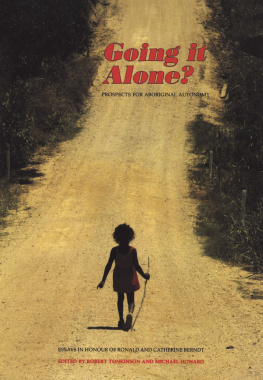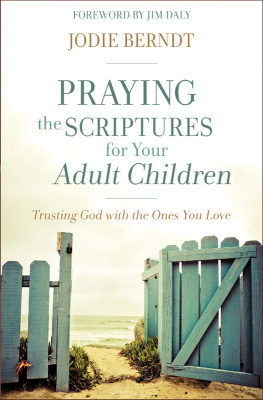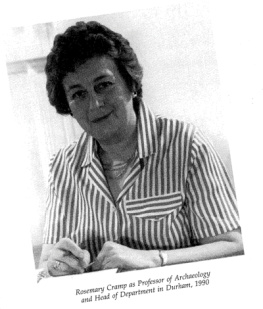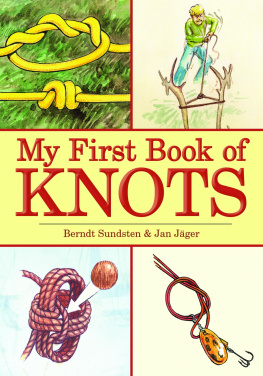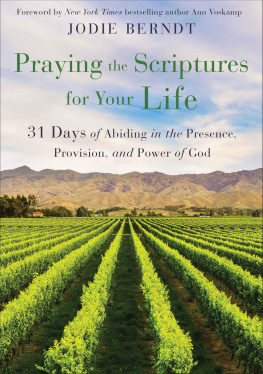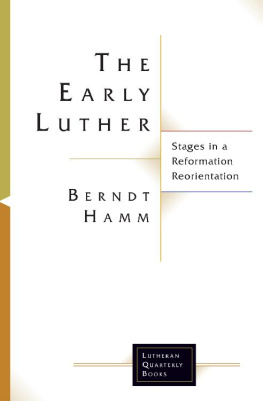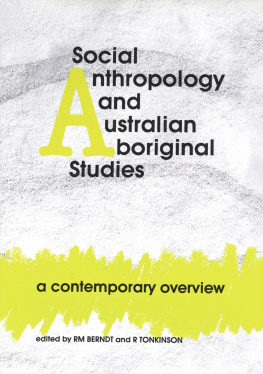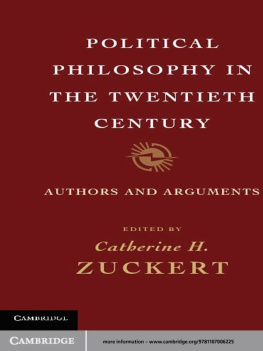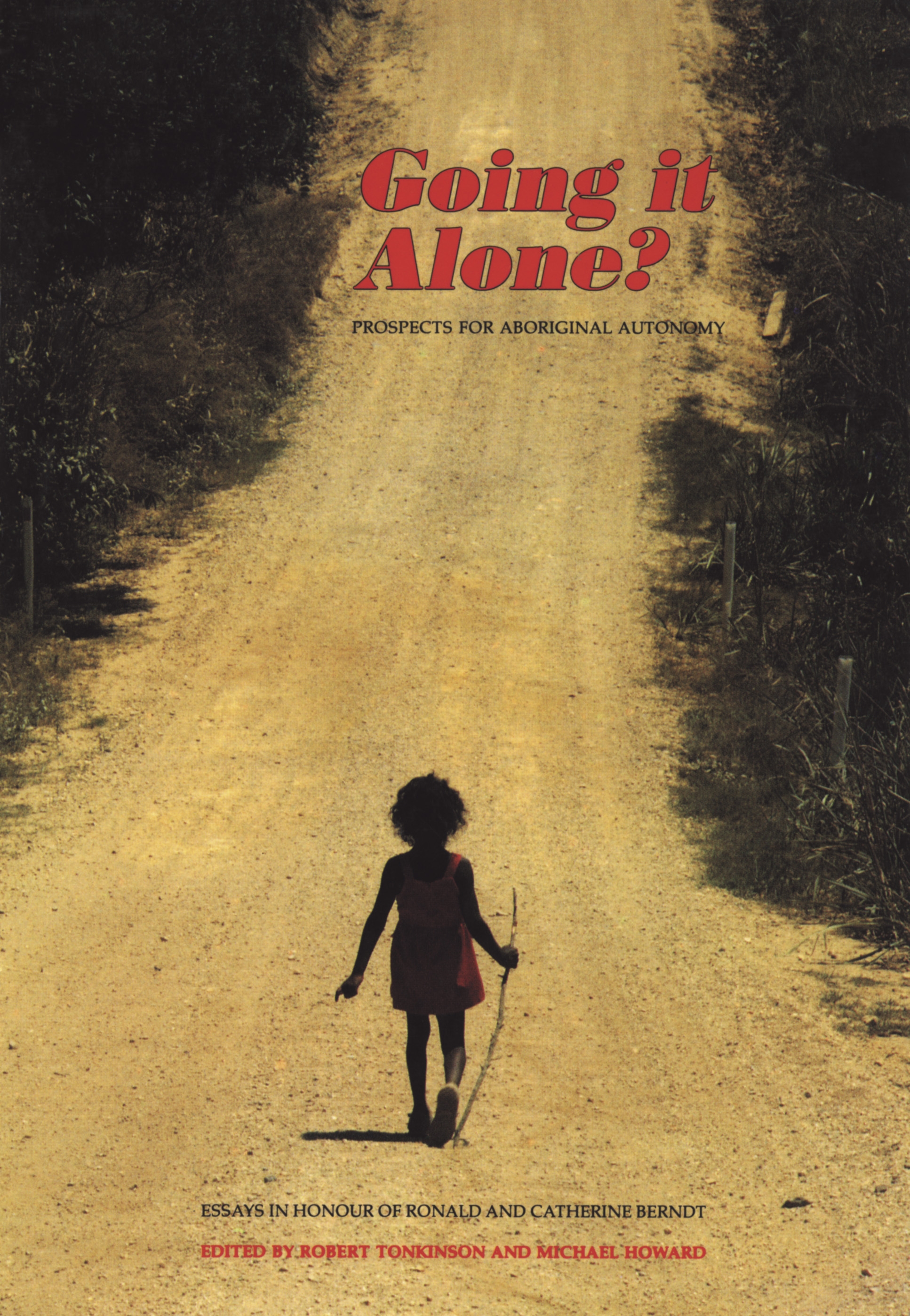THE BERNDTS:
an overview
RAYMOND FIRTH
I have accepted with pleasure the invitation to write this overview to the festschrift for Ronald and Catherine Berndt; not that I feel I have any particular competence to evaluate the work of the Berndts. However, now that so many of the founders of modern social anthropology in Australia are no longer with usAR Radcliffe-Brown, AP Elkin, Donald Thomson, W Lloyd Warner, Phyllis Kaberry and William Stannerit is perhaps appropriate for someone of the older generation from outside Australia to express appreciation for the ethnographical and theoretical communications of the Berndts over the last forty-five years.
My own acquaintance with Catherine and Ronald goes back many years, particularly to the period they spent with us at the London School of Economics. They came to the Department of Anthropology after considerable field research and teaching experience to undertake their doctoral work, which they completed in 1955. Ronald worked on social control in New Guinea Highland society with Isaac Schapera; while Catherine worked with me on problems of myth; and both were active members of our various seminars. They also contributed to meetings of the Association of Social Anthropologists and other professional gatherings, and were very much part of the British anthropological scene. What particularly impressed their contemporaries, as I remember, was their already extensive first-hand field knowledge, their wide command of the scholarly literature of anthropological theory, and their intense focus upon the discipline of anthropology as a joint activity.
Husband-and-wife teams have been no novelty in anthropological field research, and cases where each marriage partner has made an independent professional contribution are not rarein the British field alone, to mention only Monica and Godfrey Wilson, Scarlett and AL (Bill) Epstein, Shirley and Edwin Ardener, and even Rosemary Firth and myself. Yet in this spouse-linked field, with its subtle problems of assumption of roles, mutual stimulus and support, agreement upon authorship, division of labour and inevitable compromise with the demands of individual personality, the Berndts have been a notable model.
At times in those London years, they seemed to operate almost as a single personality, but it soon became apparent that they developed the skill of pursuing conjoint and independent interests. The pattern that they had established thirty years ago has been maintained up to the present. In the field, in organisation of professional gatherings and in publication, they have an extensive record of joint and separate contributions. And if in sheer volume of publication, Ronald may have borne the brunt of preparation, he has been the first to acknowledge the constant help received from Catherine, including her unique material from her studies of the inside life of Aboriginal women, quite unavailable to a male anthropologist.
It is not for me to try to set in perspective here the massive output of the Berndts since the results of their field research in Ooldea, South Australia, in 1941. It is enough to say that not only have they enriched greatly the corpus of Australian Aboriginal ethnography, with attention to the New Guinea Highlands almost as an interlude; they have also contributed significantly to general anthropological theory. Genealogies and kinship, the roles of women, social control, sorcery and magic, religion and ritual, myth, eschatology, poetry and visual art have all been given stimulating treatment. So here, I will confine myself to a few themes or issues which come most readily to my mind when thinking about their work.
The first point that has impressed me about their work, whether published jointly or singly, is their conscientiousness in trying to make the ethnographic record as precise and as complete as possible. This has meant unremitting attention to detail, being prepared for many arduous field trips, learning the vernacular when they could, and not being satisfied with first impressions or easy answers. Their approach embodies pertinacious pursuit of accuracy and constant checking, which are the hallmark of sound anthropological field research. This perhaps needs stressing more than ever now, when empiricism has become a pejorative word in some quarters, and the often unexamined structural-functionalism has come to be regarded as an old-fashioned final scheme rather than as a useful initial approach.
Another feature of the work of the Berndts which became apparent soon after they began to publish was the range of their scientific curiosity. They explored, in theoretical as well as descriptive terms, themes which had tended to be overlooked or treated as marginal by most other researchers in the field. The orientation of Ronalds treatment of social control in New Guinea society, in terms of excess and restraint, was novel for its time, with its emphasis on aggression and dissension, and should dispose of the notion that functionalists study only communities which they assume to be in equilibrium. Catherines studies of Aboriginal women built upon Phyllis Kaberrys general analysis of previous years, but deepened that analysis and greatly enlarged its cultural range.
Sex in its sociological bearings was not a new theme in anthropology. Malinowskis The Sexual Life of Savages (1929) had already attracted much attention, though it was as much about kinship as about erotic topics. And the study of sex concepts had a history in the Australian field, as witness the arguments about Aboriginal group marriage and the alleged ignorance of physiological paternity. The contribution of the Berndts in this area was not just to add to the existing piquant ethnographic descriptions of Aboriginal sexual attitudes and sexual behaviour. They pursued statements about the significance of sexual intercourse from the secular into the sacred field in a detail hitherto unknown. They explored sexual symbolism in rite, myth and art, and by analysis of a great range of songs, demonstrated the close linkage between the erotic and the religious in Aboriginal thought and action. The study of Arnhem Land love songs, which Ronald finally published in 1976, is a remarkable interpretation of great delicacy and sophistication.
A further striking element in the contribution of the Berndts has been their care for the human factor in their analysis, as well as in their field encounters. Nowadays, reflexive anthropology is much in vogue, but few of us might be as frank as was Ronald Berndt a quarter of a century ago in his lively introduction to Excess and Restraint (1962:vii):
At times we did not like these people, but just so frequently we did; and this fluctuation is mirrored to some extent in their own response to lifeaggressive and violent excitement contrasted with extreme and sometimes tearful sentimentality are expressed, for example, in love songs. Inevitably, we made enemies as well as friends; but we like to think the latter were more numerous.
At a more theoretical level, the Berndts have considered, with illuminating exemplification, how men and women react as personalities to the complex pressures of their individual drives and interests and the conventions which provide patterns for so many of their actions.
As Australian anthropologists will know, the idiom of discussion of Aboriginal affairs has changed radically over the last decades. When I was at the University of Sydney from 1930 to 1932, despite the earlier work of Fison, Howitt, Gillen and Spencer, and the contemporary efforts of Radcliffe-Brown, Elkin and others to inform the public, it was hard to arouse more than a polite curiosity about the existing situation and probable future of Aboriginal people. With other anthropologists, I had visited the settlement at La Perouse near Sydney and talked with the dark people, as they then described themselves, about their problems of poverty and social restriction. And I still remember vividly seeing an elderly Aboriginal man, walking rather uncertainly down the street after the pubs had closed, and muttering loudly, White Australia! White Australia! Heres your white Australia! and pointing to his own white hair! At this period, Aborigines were regarded as users of land, whether they were hunters and foragers, workers on cattle stations or residents of missions or townships. Yet, any suggestion of Aboriginal ownership or priority rights in land was unheard of in all public contexts.

